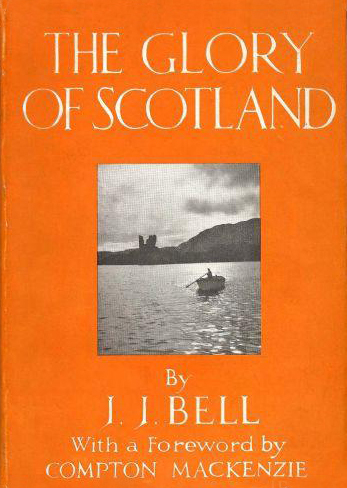THE reference room at Helensburgh Library has a large collection of books by writers with a local connection, and sixteen of them are by J.J.Bell.
He certainly is not the best known of the local authors, but he was prolific.
John Joy Bell, who lived for some years at Clyde Cottage, Middleton Drive, Craigendoran, was born in Hillhead on May 7 1871, a son of tobacco manufacturer James T.Bell and his wife Annie Lamont.
He was educated at Kelvinside Academy in Glasgow and Morrison’s Academy in Crieff, then studied chemistry at Glasgow University.
In 1895 he began his writing career with poetry. A year later he became editor of the university magazine, and a career in journalism beckoned.
After completing his degree in 1898 he joined the staff of the Scots Pictorial as a sub-editor, and in the next few months he published two books of rhymes for children.
In addition to his work at the magazine he wrote regularly for the Evening Times, the Weekly Herald and the People’s Friend, and contributed stories, sketches and verse to London magazines.
He was so successful that he decided to give up his job and concentrate on freelance writing.
In 1900 a collection of his poetry, inspired by the war in South Africa, was very popular, and two years later he delighted readers with a completely different project for which he became famous all over the world.
His creation ‘Wee Macgreegor’ was a series of sketches about ordinary Glasgow working folk, the Robinson family, written with insight and gentle humour. In a few months there were nearly 40 editions of the little book.
About this time he married Helen Robertson Geddes, and soon after moved from Blairmore to Craigendoran, where he settled down to writing. They had a son, David James.
The sketches had originally appeared in the Evening Times, and they were followed by further series which appeared in book form, including ‘Ethel’, ‘Mistress M'Leerie’, ‘Wee Macgreegor Again’, ‘Mr Pennycook's Boy’, and "Christina’.
A more serious novel of village life, ‘Jess & Co.’," first appeared in Woman at Home magazine, and was published separately in 1904.
Later works were ‘Thou Fool’, ‘Joseph Redhorn’, and ‘Whither Thou Goest’, each successively reviewed by the press as his strongest and most enduring production.
Literary experts reckon that his skilful and witty use of the Glasgow vernacular made Wee Macgreegor a runaway best seller.
A Macgreegor craze temporarily hit Glasgow — with a dramatic rise in demand for the hero's favourite sweet of tablet — and the book was even pirated in North America.
He produced many other books throughout his career, mostly with Glasgow as a backdrop, but none of his other fictional work matched the success of the original Wee Macgreegor.
Two nostalgic but wryly-humorous autobiographical books in the early 1930s restored his popularity, and in 1933 this led to a new edition of Wee Macgreegor, which has since been reprinted many times.
 He wrote several books about Scotland, including in 1932 The Glory of Scotland; in 1933 Scotland's Rainbow West; and in 1934 Scotland in Ten Days. He had a particular interest in golf and golf courses, mentioning many in these books.
He wrote several books about Scotland, including in 1932 The Glory of Scotland; in 1933 Scotland's Rainbow West; and in 1934 Scotland in Ten Days. He had a particular interest in golf and golf courses, mentioning many in these books.
Bell was a friend of another author who spent many years in Helensburgh, Neil Munro, who was also a journalist and editor of the rival Evening News in Glasgow, who is best remembered as the creator of Para Handy.
After Munro died at his burgh home, Cromalt, East Clyde Street, on December 22 1930, Bell wrote an obituary and paid this tribute: “He leaves behind him the work and memory of a rarely fine novelist, a real poet, a notable and, above all, happy journalist.”
Bell died on November 11 1934 in Aberdeen, where he lived at 33 High Street, Old Aberdeen, not long after his final book, ‘Scotland in Ten Days’, was published.
He and his wife, who died in 1919 at the age of 43, were buried in the graveyard at Aberdeen’s St Machar’s Cathedral.




